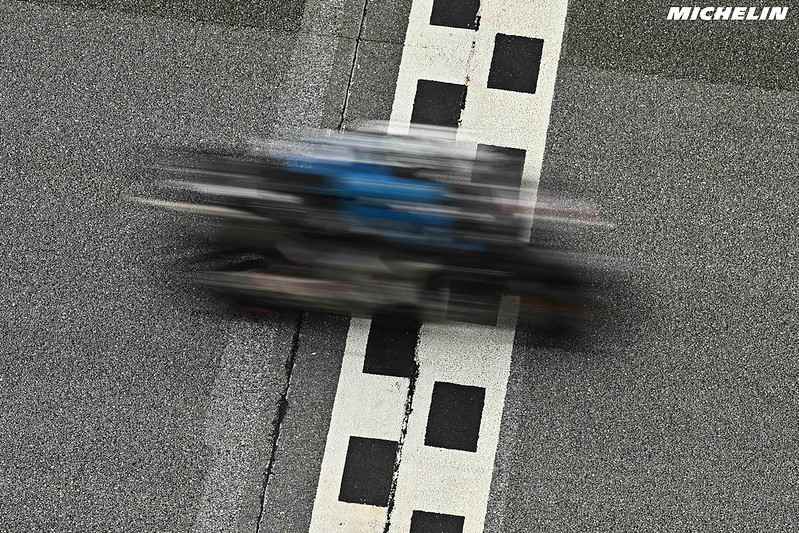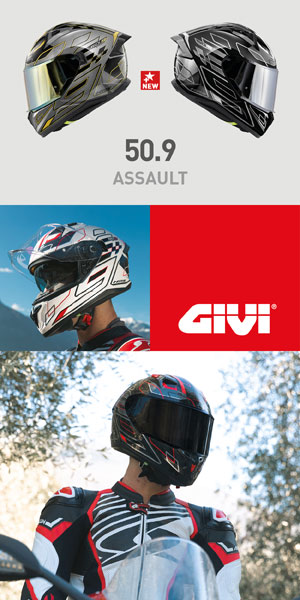So far, the task of HRC engineers in MotoGP seemed relatively simple: provide Marc Marquez the necessary power and have a chassis to have enough confidence in the front of the Honda RC213V to allow it to dominate the championship. This led to the creation of a fast motorcycle, but extremely demanding to ride, if one could control its kicks under braking, the only area where it could occasionally take a certain advantage.
More Marc Marquez wanted to join Ducati, in order to find a winning bike, and it seems that this decision was technically beneficial for Honda. Without the most talented rider of his generation, Honda was forced to go back to basics: designing the fastest bike in MotoGP. So, Honda completely abandoned its old approaches. The 2024 prototype unveiled at Sepang features radical changes: it is longer and lower, rather than short and tall, placing more emphasis on aerodynamics to control wheelies and improve acceleration.
At the Sepang test, HRC unveiled two distinct versions of its motorcycles. The 2023 model was discarded, and in its place, an improved version of the prototype presented in Valencia at the end of the 2023 season was submitted for testing, accompanied by another variant on the same theme. In fact, the RC213V is almost entirely new for 2024: it was around 8kg lighter than last year's RCV. From the suspension to the engine, including aerodynamics, everything has changed on the bike, in an aggressive development strategy aimed at closing the gap to the top positions.
These bikes feature two distinct engine specs and feature numerous aerodynamic updates, creating a significant workload for the four Honda riders.
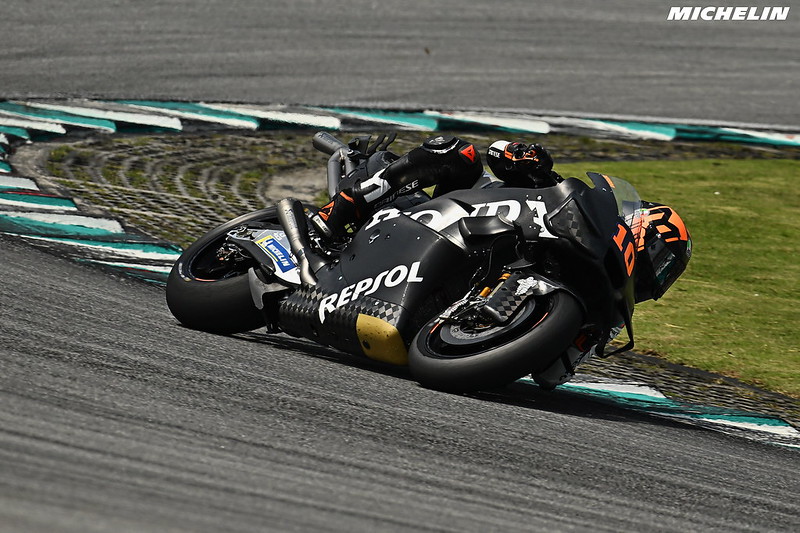
Like Aprilia, which inspired all the teams with a bi-plane fairing allowing it to exploit the ground effect on the angle, Honda brought this fairing to Sepang.
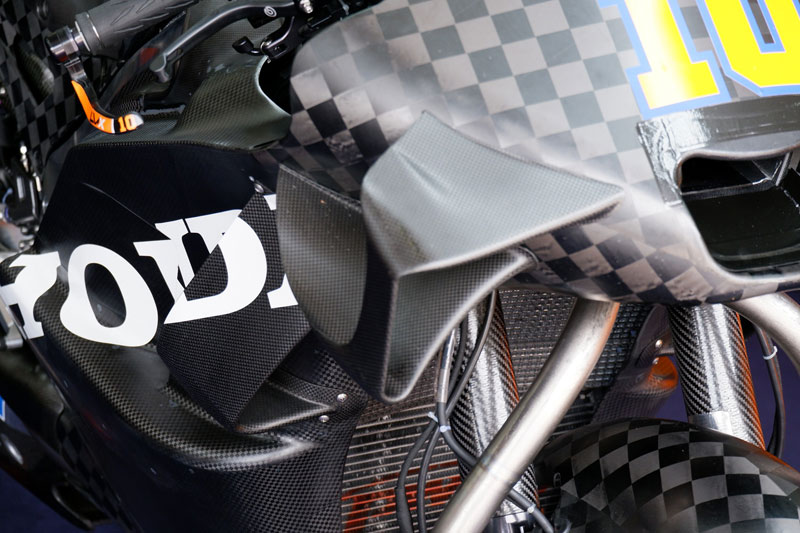
This is the first aerodynamic package used by Honda, already used during the Valencia test, to serve as a reference for the riders. It is composed of upper fins as well as side fins. The upper fins are quite unique as the lower panel is set back significantly from the upper panel.
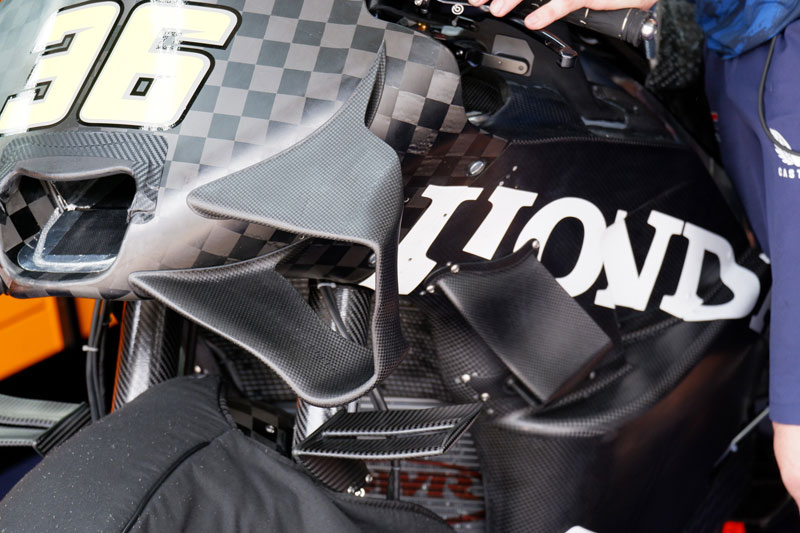
Honda's second and newest aerodynamic option does the opposite: The lower flap of the spoiler protrudes further forward than the upper flap, and the lower flap is also rather thin. The side fins are also much smaller.
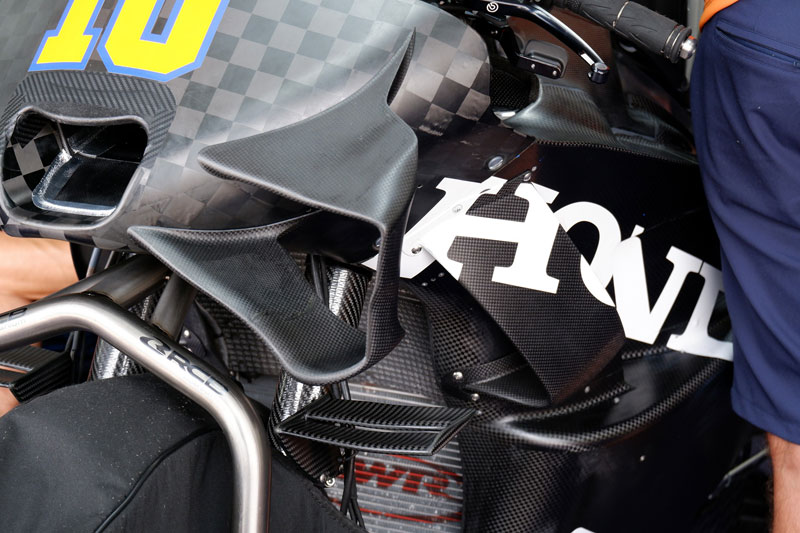
Luca Marini also tested a sort of mix of these two aero packages, as he was looking for more downforce.
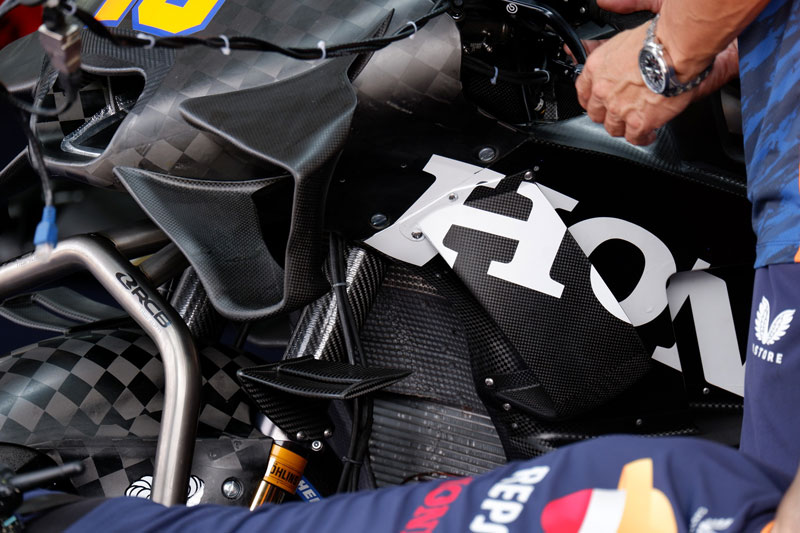
Here we find this latest aerodynamic package, which is equipped with the very latest developments concerning the upper wings associated with the side wings, which appeared on track for the first time during the Valencia test.
But it is the rear section which seems to be one of the major concerns at the start of 2024. The aerodynamic regulations concerning the rear part are not as strict as for the front, the teams will therefore be able to evolve the aerodynamics in this area all year round.
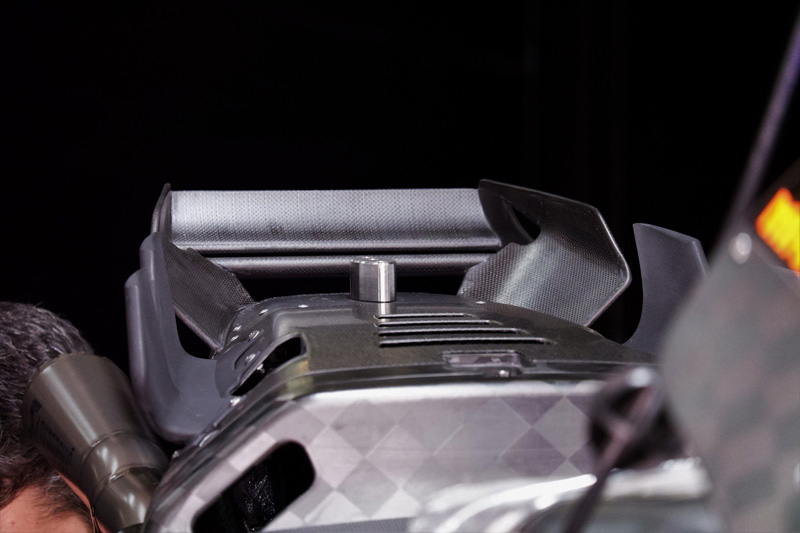
Thus, the front package also appears on the track with these aerodynamic appendages at the rear of the RC213V, and seem to work together. Here we see these stegosaurus blades aligned with the outer edges of the rear wing. It appears that this aerodynamic combination helps improve the rear stability of the Honda.
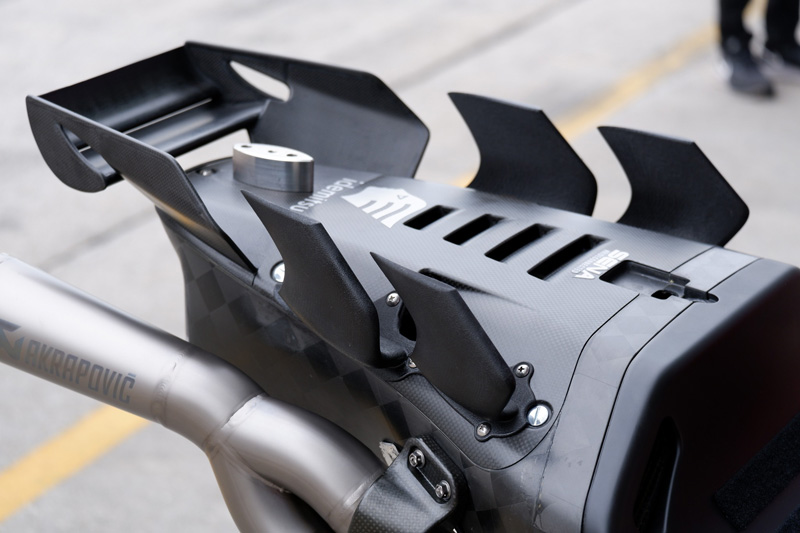
Here's another look at the aero package on the rear of the Honda, looking very aggressive. But compared to what we saw during the 2023 season, it has several details which prove that Honda places real interest in this area, made up of four distinct parts, where the first two blades are perpendicular to the rear of motorcycle. The third blade is somewhat inclined and connected to the last blade, in order to modify the downforce in turns.
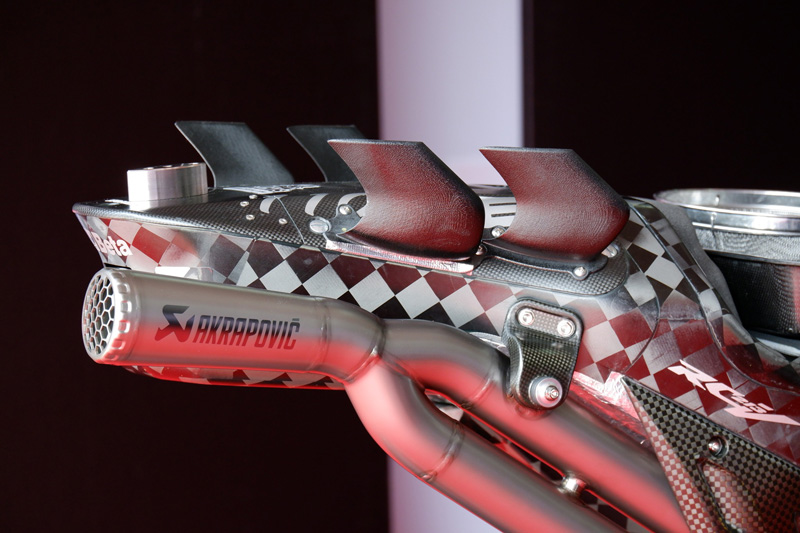
This rear aerodynamic package concludes with a detail reminiscent of an F1 wing, the ends of which rise slightly, perhaps with the intention of providing downforce to the rear when the bike is upright on a line right or during braking phases. In addition to the aerodynamic wing, this detail also integrates a feature using the function of the Flap Gurney, which is a small strip installed along the trailing edge of a wing in aeronautics, but also F1 fins, in order to improve the performance of a simple profile to a level equivalent to that of a high-performance profile with a more complex design.
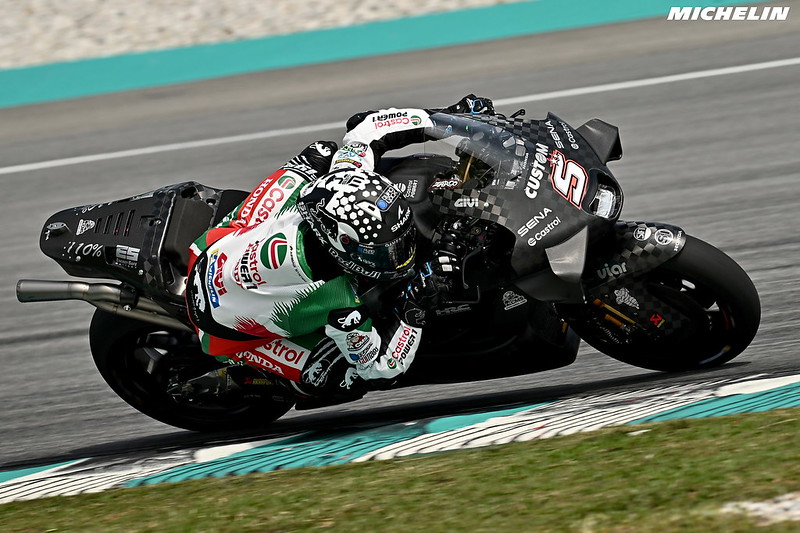
Another version of the RC213V was on track, without all these rear aerodynamic tricks, undoubtedly to compare the feeling and allow the pilots to judge their interest.
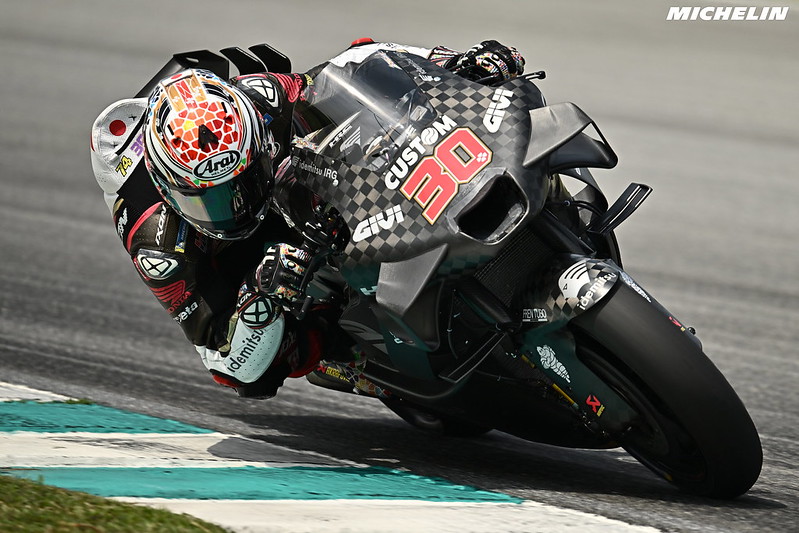
In addition to the appendages located at the rear, Honda riders also tested the benefit of installing fins attached to the fork tubes, just above the mudguard, having a shape that has already been adopted by Ducati and KTM.
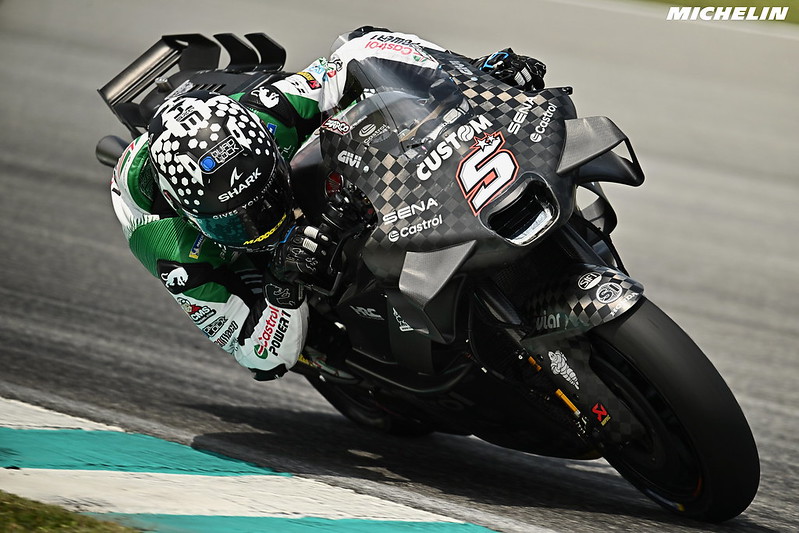
Photo credits: MotoGP.com, Michelin










